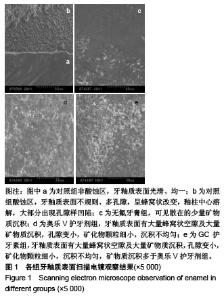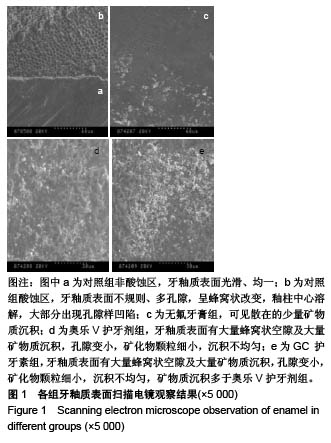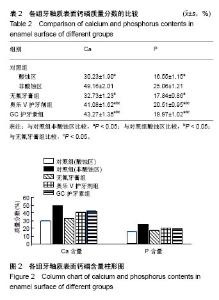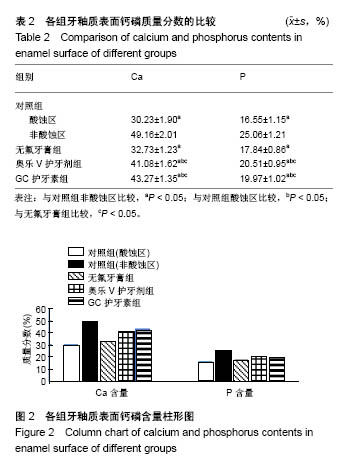| [1]吉雅丽,王志刚,杨汴生,等.河南农村6岁儿童乳牙患龋及影响因素分析[J].中国学校卫生,2015,36(11):1741-1743. [2]李杨,房丹.遵义地区留守儿童早期重症龋相关因素分析[J].中国妇幼保健,2016,31(12):2492-2496.[3]甘敏福,顾杰林,叶翀,等.广西贵港市12岁留守儿童和非留守儿童龋病现状分析[J].广西医学,2017,39(11):1750-1751.[4]杨凯,张绍伟,叶小明.大鼠氟斑牙(含氟牙膏型)动物模型的建立及实验检测[J].中华口腔医学研究杂志(电子版), 2017,11(4):204-210.[5]Rosin-Grget K,Peros K,Sutej I.The cariostatic mechanisms of fluoride.Acta Medica Academica. 2013;42(2):179-188.[6]黄少宏.群体氟防龋指导策略[J].中国实用口腔科杂志, 2014,7(7): 389-394.[7]林永旺,杨湘俊,白兰,等.表没食子儿茶素浸食子酸酯对脱矿釉质矿化作用的体外研究[J].牙体牙髓牙周病学杂志, 2017,27(11): 634-637+ 660.[8]周晶,朱丽德孜•托列别克,李一鸣,等.天然药物表没食子儿茶素浸食子酸酯与牙本质龋的再矿化[J].中国组织工程研究, 2015,19(3): 389-393.[9]王丽梅,刘字珍,吕再玲,等.隔山消不同溶剂提取物对脱矿釉质再矿化作用的实验研究[J].口腔医学,2015,35(11):897-900.[10]李子夏,朱勇,左艳萍,等.不同浓度锌的含氟矿化液对人恒前磨牙釉质脱矿影响的体外研究[J].医学研究杂志, 2015,44(9):94-96.[11]Lynch RJ,Churchley D,Butler A,et al.Effect of zinc and fluoride on the remineralization of artificial carious lesions under simulated plaque fluid conditions.Caries Res. 2011;45(3):313-322.[12]李文娟,程敏,童辉燕,等.含硅再矿化液中硅含量对脱矿牙釉质再矿化影响研究[J].中国实用口腔科杂志,2015,8(7):431-434.[13]Saito T,Toyooka H,Ito S,et al.In vitro study of remineralization of dentin:effects of ions on mineral induction by decalcified dentin matrix.Caries Res.2003;37(6):445-449.[14]李子夏,彭彬,左艳萍.不同浓度锶的含氟矿化液对脱矿牙釉质的再矿化作用研究[J].山西医科大学学报,2015,46(2):155-156.[15]Yamaguchi K,Miyazaki M,Takamizaw T,et al.Effect of bovine enamel as detemined by an ultrasonic device.J Dent Res.2006;34(3): 230-236.[16]黄婉灵,张泽标,张莹.氟化钠联合护牙素治疗牙釉质脱矿再矿化的效果评价[J].中国医药科学,2017,7(18):19-22.[17]李文娟,方谦.生物活性玻璃促进釉质人工龋再矿化效果的研究[J].实用口腔医学杂志,2017,33(6):731-734.[18]马文婷,秦杰,杨清岭.五倍子单宁酸联合BAG对乳牙釉质龋再矿化的定量评价[J].中国体视学与图像分析,2018,23(3):278-282.[19]董志红,聂志萍,周长春.自然唾液中介孔生物活性玻璃诱导牙釉质仿生再矿化研究[J].无机材料报,2016,31(1):88-94.[20]Bekes K.2-Clinical presentation and physiological mechanisms of dentine hypersensitivity.Dentine Hypersensitivity,2015:21-32. [21]王丽,李娜,郑雪飞,等.CPP-ACP与nHAP 2种再矿化试剂对人工致龋液pH 值的影响[J].新疆医科大学学报, 2015,38(2):219-222.[22]Walsh LJ.Contemporary technologies for remineralization therapies: A review.Int Dent Sa.2009; 4(4):34-46.[23]Andersson OH,Kangasniemi I.Calcium phosphate formation at the surface of bioactive glass in vitro.J Biomed Mater Res.1991;25(8): 1019-1030.[24]Wefel JS.Nova Min:Likely clinical success.Adv Dent Res.2009; 21(1):40-43.[25]刘子晗,郑红,徐疾,等.牙齿脱敏剂对釉质再矿化的体外研究[J].实用医学杂志,2016,32(12):1930-1933. [26]周淑,刘子晗,郑红.生物活性玻璃对乳牙牙本质龋再矿化的体外研究[J].南京医科大学学报(自然科学版),2016,36(1):107-109.[27]陈俊宇,杜倩,刘琰,等.3种无氟儿童牙膏对乳牙早期釉质龋再矿化作用的体外研究[J].口腔医学,2015,35(8):632-635.[28]方谦,穆玉,周雪,等.生物活性玻璃对体外脱矿釉质再矿化的影响[J].郑州大学学报(医学版),2016,51(2):263-266.[29]骆慧,贾德蛟,刘海霞,等.酪蛋白磷酸多肽/无定形磷酸钙复合物与氟化钠预防正畸托槽周围的牙釉质脱矿[J].中国组织工程究, 2016,20(3): 377-381.[30]Zhou C,Zhang D,Bai Y,et al.Casein phosphopeptide-a-morphous calcium phosphate remineralization of primary teeth early enamel lesions.J Dent. 2014;42(1):21-29.[31]Peric TO,Markovic DL,Radojevic VJ,et al.Influence of pastes containing casein phosphopeptide-amorphous calcium phosphate on surface of demineralized enamel.J Appl Biomater Funct Mater. 2014;12(3):234-239.[32]崔晶,曹军,赵信义,等.多乐氟、护牙素及含氟牙膏促进釉质再矿化的体外研究[J].牙体牙髓牙周病学杂志,2016,26(4):231-235.[33]Agrawl N,Shashikiran ND,Singla S,et al.Atomic force microscopic comparison of remineralization with casein-phosphopeptide amorphous calcium phosphate paste,acidulated phosphate fluoride gel and iron supplement in primary and permanent teeth:an in-vitro study.Contemp Clin Dent.2014;5(1):75-80.[34]徐晓南,方谦,彭伟,等.绿茶浸提液对釉质再矿化作用的体外研究[J].牙体牙髓牙周病学杂志,2015,25(10):602-605.[35]陈莹,梁迎东,杨华甫,等.普洱茶水浸液对人工龋齿显微硬度的影响[J].大理学院学报,2015,14(10):6-8.[36]施桔红,黎红,王伊娜.葡萄籽提取物促进早期牙本质龋损再矿化作用的体外研究[J].上海口腔医学,2015,24(1):18-22. |



